The $80 Power Supply for Almost Everyone: The Corsair TX550M 80Plus Gold PSU Review
by E. Fylladitakis on December 1, 2017 8:00 AM EST- Posted in
- Cases/Cooling/PSUs
- Corsair
- PSUs
- 550W
- TX
- Modular
- Power Supply
External Appearance
The TX550M is the least powerful model of the entire TX series. It is aesthetically simple and subtle, with the designer trying to find a balance between oversimplification and excessiveness. The chassis is sprayed with a satin black paint and decorative stickers cover the largest portion of its sides. These decorative stickers have the company logo and product model printed on them, and are placed in such a way that the sticker facing the right side of a case will always be upright, regardless whether the PSU has been installed with its cooling fan facing upwards or downwards. The sticker with the electrical specifications and certifications of the PSU can be found at the top side of the chassis.
With a body that measures 150 × 86 × 140 mm (5.9 × 3.4 × 5.5 in), the TX550M adheres fully to the ATX design guide, making it compatible with any ATX-compliant case. The design holds no surprises. At the rear we can see the typical AC receptacle and a small on/off switch, while at the front we find the four connectors for the modular cables and the hardwired cables. There are four connectors, three for Molex/SATA cables and one for a CPU/PCIe cable. Note that only the PCIe cable with the two 6+2 pin connectors is included in the original bundle. Still, if the user wants to power a system that requires two 4+4 pin CPU cables but has no PCIe connectors at all, it is possible to do so with a TX550M.
Internal Design
Due to its standard ATX chassis, the largest fan that Corsair could fit in the TX550M is a 120 mm NR120L. Corsair rebrands their fans and we cannot tell who the original manufacturer is but we can tell it has a rifle (advanced sleeve) bearing engine and a maximum speed of about 1500 RPM. The design of the blades suggests that it is a very high-pressure fan, which appears to be a strange selection for a PSU without excessively packed internals.
The OEM behind the creation of the TX550M is a Chinese OEM, Great Wall. We first encountered Great Wall’s designs when Corsair first implemented their platforms back in 2011. Great Wall is not a very popular OEM but they frequently cooperate with Corsair and their products were proven to be reliable.
The filtering stage of the TX550M begins on a small PCB soldered at the back of the AC receptacle and continues onto the main PCB. We counted a total of four Y capacitors, two X capacitors and two filtering inductors, which are the standard for a quality PSU. There is one conversion bridge feeding the APFC circuitry. Surprisingly, the 550W unit has two APFC capacitors, each rated at 450V/220μF. Great Wall could easily replace these two small capacitors with an equally effective larger one. The APFC coil is shielded inside a plastic casing, most likely to prevent electromechanical noise (also known as “coil whine”).
Generally speaking, the platform of the TX550M is technologically simple, based on circuitry designs that are being used into consumer PSUs for many years. Two MOSFETs form the simple half-bridge primary inversion circuitry and four MOSFETs generate the 12V line on the secondary side of the main transformer. The DC-to-DC converters found on the vertical PCB generate the minor 3.3V and 5V rails. It would seem that the PSU owes its 80Plus Gold efficiency rating to the use of highly efficient active components, as we have seen other units using the same base platform with minimal differences failing to reach such high efficiency standards.
All of the capacitors inside the TX550M are coming from Japanese manufacturers. The primary APFC electrolytic capacitors are from Nippon Chemi-Con. The secondary capacitors, electrolytic and polymer alike, are supplied by Nippon Chemi-Con or Rubycon. Both manufacturers are considered to be two of the most reliable manufacturers and are highly popular. The heatsinks of the PSU appear to be adequate for an 80Plus Gold certified PSU but they could definitely be much better.


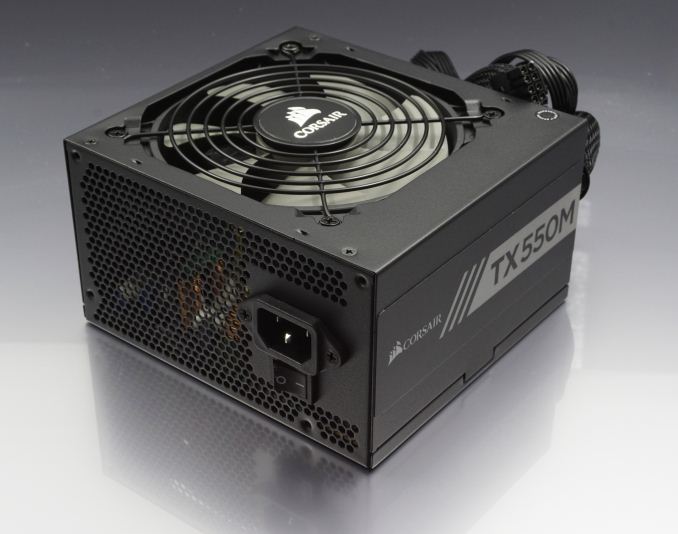
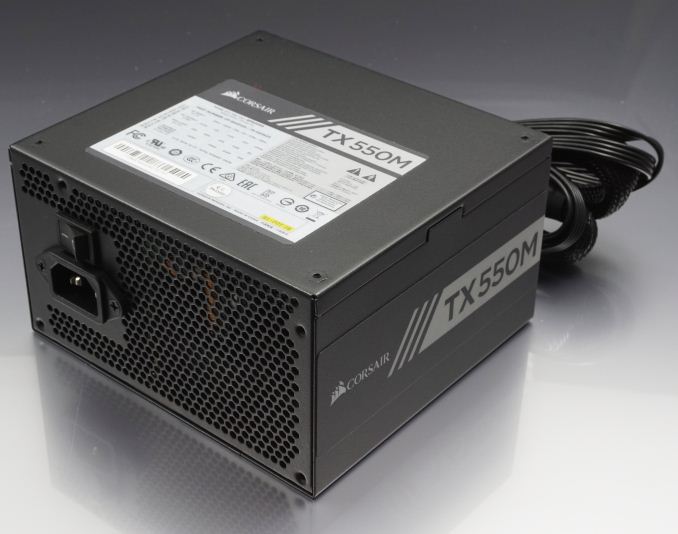
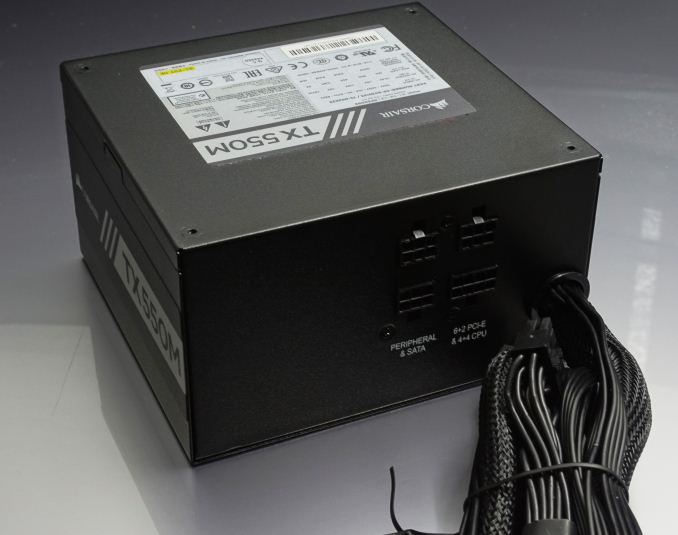
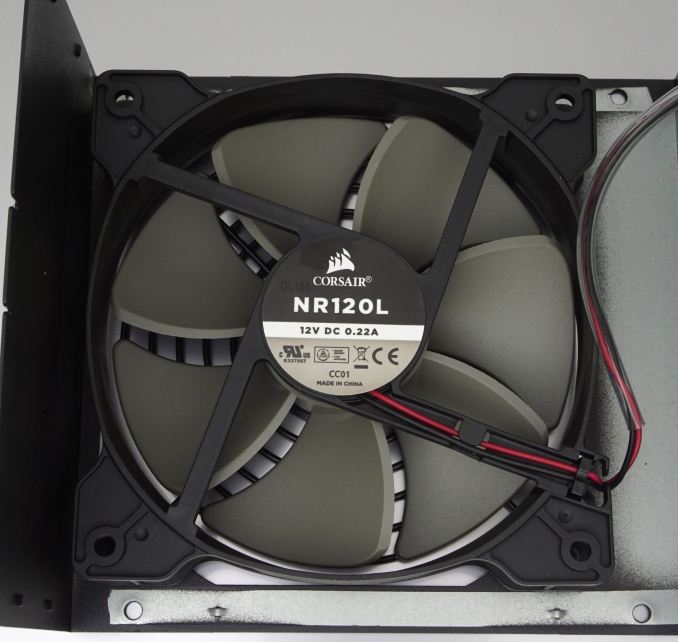
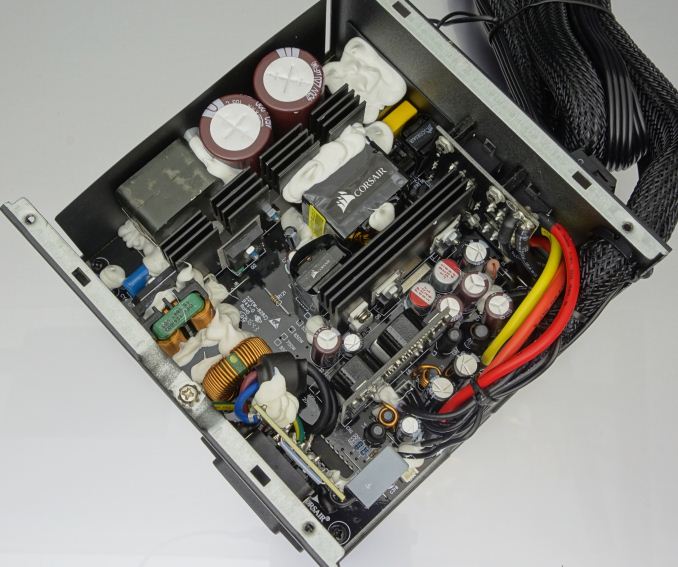
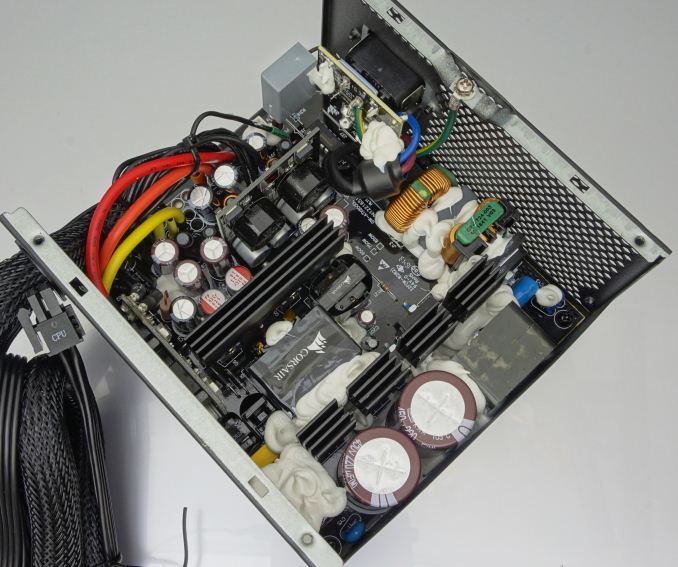
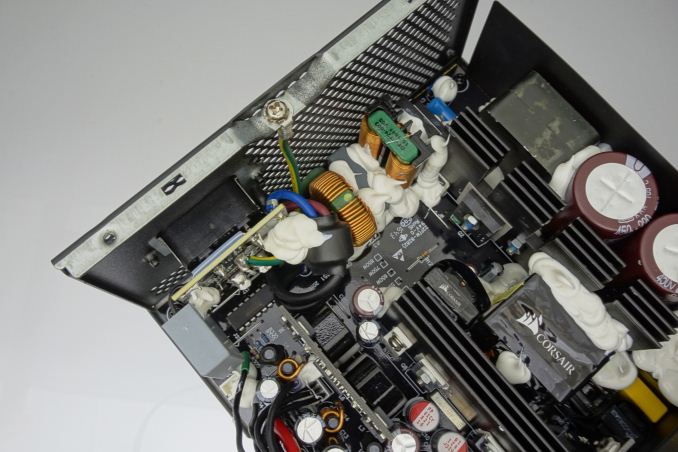
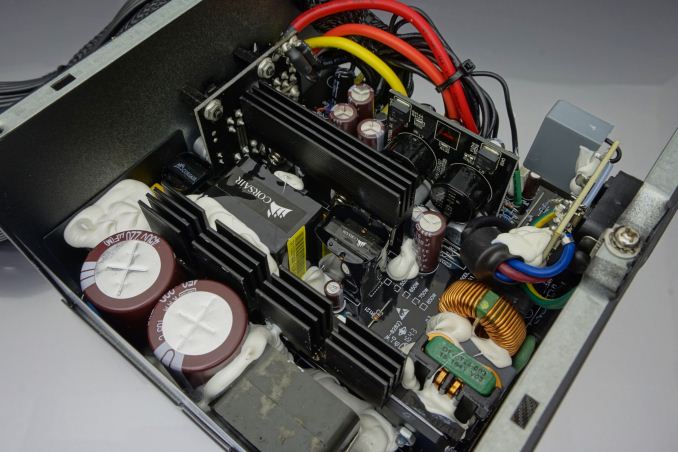
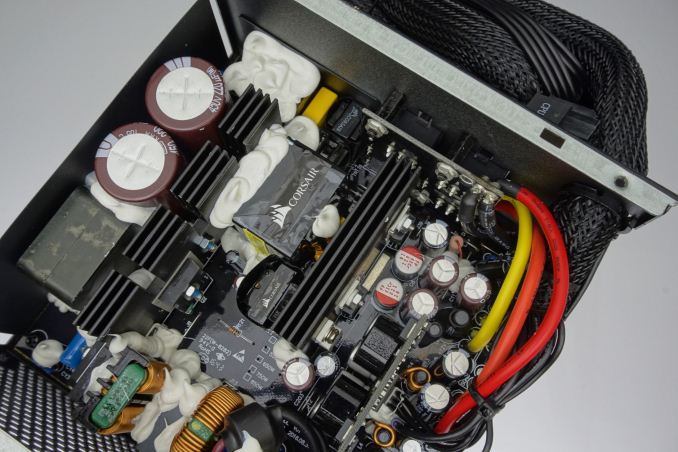








42 Comments
View All Comments
Kitsunemimi - Friday, December 1, 2017 - link
>People need reliability, not 3D graphics.Yeah, because all this "gaming" nonsense and those GeForce video cards are so dumb and pointless.
>long list of things people don't need [...] because of media hype, like [...] smart phones
I agree that the reason why effectively the entire mobile phone market has converted to smart phones within the span of a mere few years is none other than "media hype".
>cell phones
Are you high?
>3D video cards are expensive and energy wasting.
>people don't need [...] hybrid cars
What a joke.
wolfemane - Friday, December 1, 2017 - link
I own a hybrid for the simple fact I only have to stop at a pump once a month vs once a week. I didn’t get one for environmental reasons, social status, or media hype. I got one because my family needs a car and I’m sick of paying for gas. And before you get all high and mighty again, it cost no more than a similar size car with a similar package.DanNeely - Friday, December 1, 2017 - link
I'm not quite breakeven with the payment on my Accord hybrid at current prices/commute length; but probably will be after I move next summer (planning on a better but more distant location). Even if current prices/miles driven stay the same I'll break even about 1.5 years after my car's paid off and net $400/year afterwards. I kept my previous car for just under 11 years before something not worth the cost of fixing failed and forced a replacement (I was hoping for 2-3 more years out of it); so I should come out ahead by a good margin over the lifetime.Yuriman - Friday, December 1, 2017 - link
I picked up a used Insight around 4 years ago for 3 grand. Averaging between 65 and 85mpg, put 75,000 more miles on it with nothing but a set of tires and some oil changes. According to records I got from the previous owner, it's still on its 17 year old factory hybrid battery. From a value perspective it's hard to beat. Even compared with an economy car like a Civic or Corolla, this car has paid for itself in gas alone.New hybrids often don't have much premium over their non-hybrid counterparts, and seem to have, on average, better reliability, so I don't think the original comment holds any weight.
MrSpadge - Friday, December 1, 2017 - link
And I always wondered who's buying those low end Quadros. Have fun saving money with them over the "expensive 3D cards". Oh, and never use iGPUs - they have the 3Ds as well!AntonErtl - Friday, December 1, 2017 - link
Actually my PC without discrete graphics card (MSI Z170A-Pro, Core i5-6600K @4GHz, 16GB RAM, 3 SSDs, DVD drive) idles at 22W, and the peak power consumption I see is around 70W (still below the 20% point of its 400W PSU); and I measured the current into the PSU, i.e., these numbers include the PSU losses. I have a discrete graphics card lying around (Radeon 6770); the game I play runs nicely with the iGPU, though, so I did not put it in the box. With this card, the power consumption would be still less than 200W.hybrid2d4x4 - Friday, December 1, 2017 - link
"The optimal power range for a typical home entertainment/gaming system usually is within 400-600 Watts"Please stop regurgitating this kind of nonsense. The optimal range is as low as 120W for integrated video systems and up to ~300W for top-tier single card. There's the 1% that will overclock and/or run multiple vid cards, and these are the only people that will ever stress this kind of PSU to even 50%.
As a point of reference, my i5 4670, GTX1060, 4x4GB DDR3, 1 SATA SSD + 1 HDD system idles at 40W, and uses a peak of 220W measured at the wall. Typical gaming is 170-200W. I'm using a 400W Platinum PSU, and feel like this is a bit overkill for this system.
For a workstation with IGP, I would want a gold/plat 200W PSU, but nothing like this exists thanks to these articles normalizing the 500W-800W PSUs for normal consumers. Please stop it!
fred666 - Friday, December 1, 2017 - link
I agree.There is no reason to get more than 300-400W for the average user and this is including a stand alone video card and lots of peripherals. It's sad to see web sites such as Anandtech fall into the marketing BS of the power supplies makers.
t.s - Sunday, December 3, 2017 - link
average user using PC around 100-200Wsonny73n - Saturday, December 2, 2017 - link
I also agree.I fell for articles like this one and ended up with a 850W Corsair PSU. Even tho I OCed my i5 and my GPU, the power peak would never go above 380W.
Fool me twice, shame on me... Well, almost.